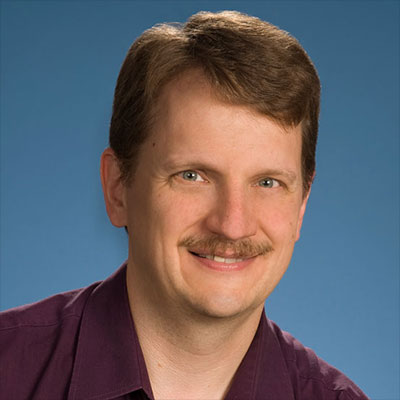Jonathan Gardner Deputy Senior Project Scientist, James Webb Space Telescope NASA Goddard Space Flight Center
Sessions
-
AIAA SciTech Forum 2023

Dr. Jonathan Gardner is the Deputy Senior Project Scientist for the James Webb Space Telescope and also serves as the Chief of the Laboratory for Observational Cosmology in the Astrophysics Science Division of NASA’s Goddard Space Flight Center in Greenbelt, Maryland. He has worked at Goddard since 1996, except for a brief term as a Program Scientist at NASA Headquarters, Washington, D.C. in 2004.
Gardner was born in Pennsylvania and grew up in the small town of Goshen, Indiana. He attended Harvard University where he received his Bachelors degree in Astronomy in Astrophysics in 1986. While Gardner was an undergraduate student, he spent the summers of 1985 and 1986 as a student intern at Goddard, working on an early design of the Infrared Array Camera for the Spitzer Space Telescope.
He attended graduate school at the University of Hawaii, earning a Master’s degree and then a PhD in Astronomy in 1992, studying the evolution of galaxies using infrared observations. Following graduate school, Gardner won a NSF-NATO Fellowship to pursue his research at the University of Durham in England. In 1996 he returned to Goddard to work with the Space Telescope Imaging Spectrograph, a camera that was installed on the Hubble Space Telescope in 1997.
Gardner is interested in how galaxies formed as small clumps of stars early in the history of the universe and evolved into the big, bright galaxies we see today. To see the very distant galaxies, long exposures with Hubble, Spitzer and large ground-based telescopes are needed. He has been involved with studies using the Hubble Ultra Deep Field (HUDF) and the Great Observatories Origins Deep Survey (GOODS), projects that involve large teams of astronomers and push the observatories to their limits. JWST will reach beyond the capabilities of Hubble and Spitzer to find the formation of the first galaxies.
He began working with Webb as a member of the Ad-Hoc Science Working Group in the late 1990s, and joined the Project as the Deputy Senior Project Scientist in 2002. In this role, he helps the Senior Project Scientist, Dr. John Mather, watch over the scientific performance of the telescope. He also helps manage the Science Working Group and reviews the Project's education and public outreach efforts, including this website! In 2006 he wrote an article on the scientific objectives and design of the observatory for the journal Space Science Reviews.
As Chief of the Cosmology Lab, Gardner works with scientists who study the universe as a whole, through observations of the cosmic microwave background as well as observations of individual galaxies. The Wilkinson Microwave Anisotropy Probe (WMAP), launched in 2001, has established that the universe has an overall flat geometry, determined the balance of ordinary matter, dark matter and the mysterious dark energy, and has found the first evidence consistent with the theory of inflation, in which the universe went through an intense period of highly accelerated expansion very early in its history. Gardner’s lab is studying – and helping to build – future missions that will investigate dark energy and inflation.
Gardner enjoys public speaking, and often gives presentations about JWST and cosmology at museums, universities and conferences and most recently at the International Year of Astronomy opening ceremonies at UNESCO headquarters in Paris.
Gardner enjoys music and is very involved in the community. Gardner plays the guitar, and together with his wife performs in a group called Transatlantic Crossing, playing folk music from both sides of the Atlantic, including England, Scotland, Ireland and the United States. He is also interested in education and serves as the Chair of the Greenbelt City’s Advisory Committee on Education (ACE).
Official Bio
